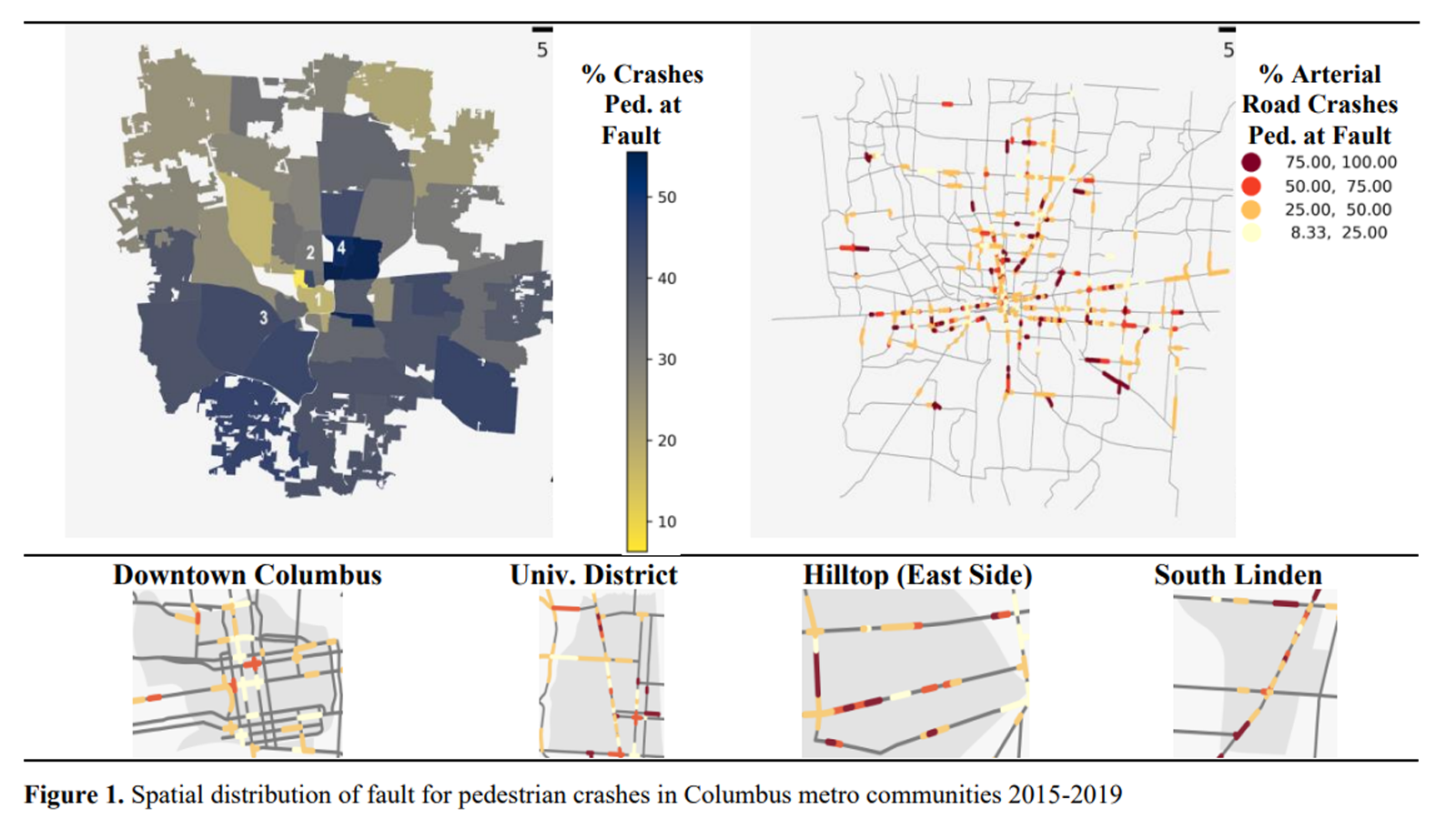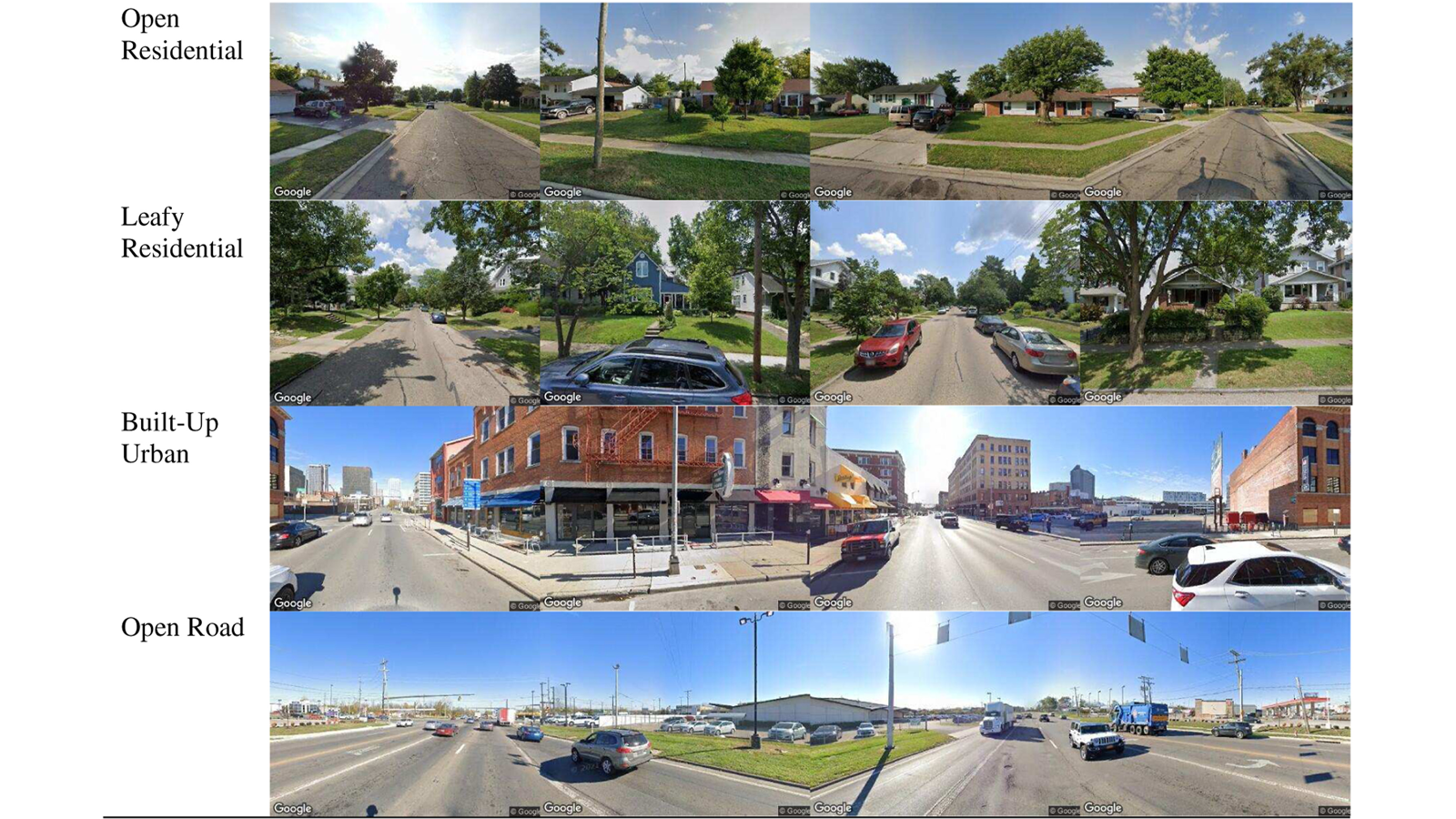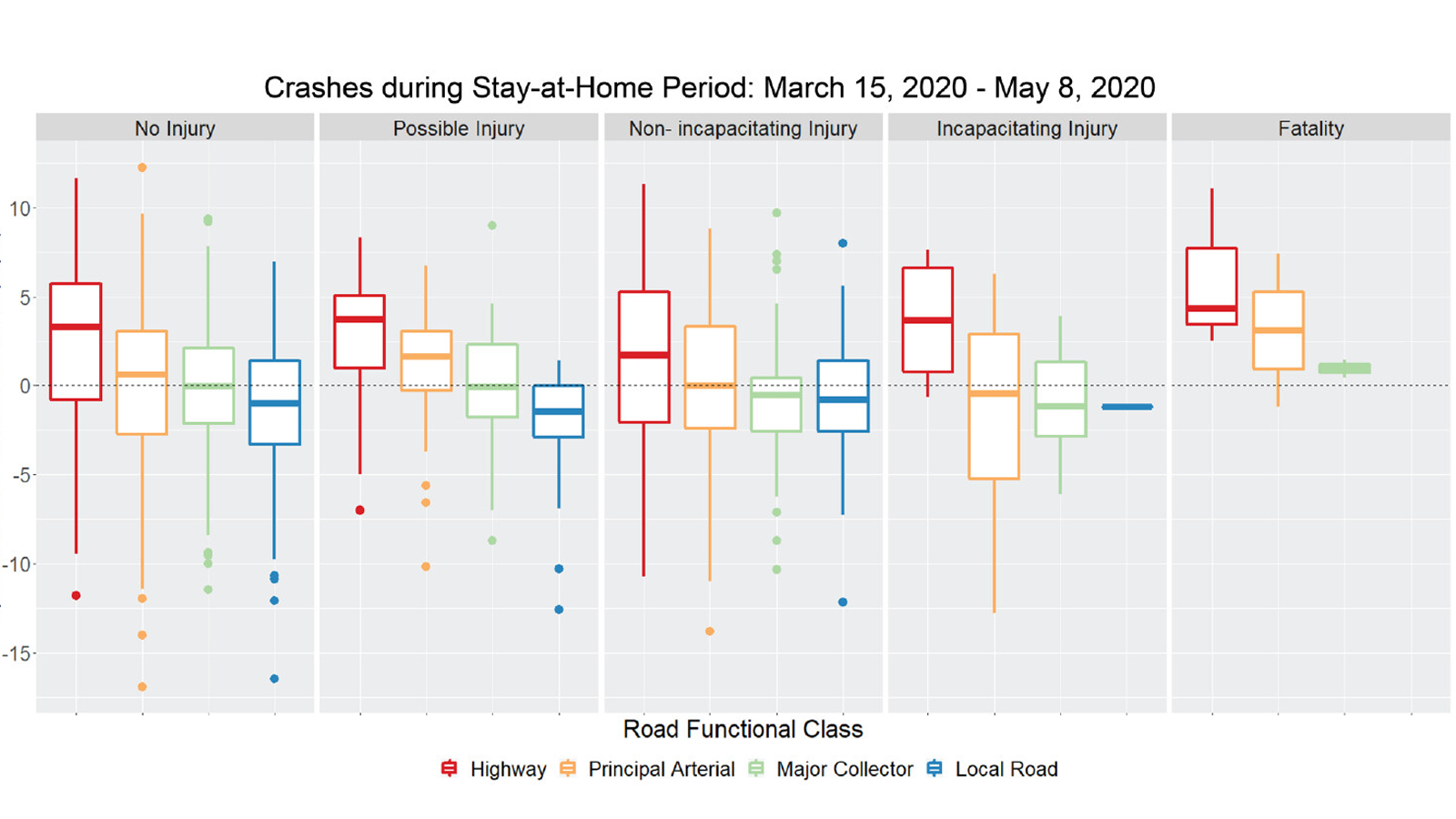Transportation Safety
A major focus of CURA's recent work has been transportation safety. Here are examples of several recent projects that address this important issue. Contact CURA for additional information about this research.
The Built Environment and the Determination of Fault in Urban Pedestrian Crashes
CURA researchers found that blame when a car strikes a pedestrian in Columbus is closely related to the location of the crash. Drivers were more likely to be found at fault in areas with more pedestrian infrastructure, like Downtown Columbus; conversely, pedestrians were more likely to be blamed in areas with higher speeds and fewer crossing signals. The research also found that blame was placed on pedestrians more frequently in some areas of the city with lower median incomes. Ultimately, the research concluded that systemic changes to design are important to ensure pedestrian safety, something that can be undermined by the designation of individual blame.
Street Space and Crash Frequency
Building upon theories that features of the built environment may induce unsafe driving, CURA used automated machine parsed street view imagery to consider how street space visible to drivers influences crash frequency. After defining and analyzing four types of street spaces, "open road" street spaces in Columbus, OH were associated with the greatest increase in crashes. This suggests a need for traffic calming and measures to differentiate environments of non-highways from highways to encourage safer driving.
Crashes during Covid-19 Stay-at-Home Policies
After heavily used roads lost significant volume during Covid-19 stay-at-home policies, CURA analyzed crash data from Columbus, OH from February to May 2020 to determine the effects of this major transportation shift. The results of two models confirm that lower volumes of traffic were associated with higher severity crashes, there was an increase in the proportion of crashes related to intoxication and speeding during this period, and a lower proportion of crashes occurred during morning traffic peaks. Transportation professionals could use this information to prepare for any future scenarios of reduced road volume.
Citations
Stiles, J., Kar, A., Lee, J., & Miller, H. J. (2021). Lower Volumes, Higher Speeds: Changes to Crash Type, Timing, and Severity on Urban Roads from COVID-19 Stay-at-Home Policies. Transportation Research Record. https://doi.org/10.1177/03611981211044454
Stiles, J., Li, Y., & Miller, H. J. (2022). How does street space influence crash frequency? An analysis using segmented street view imagery. Environment and Planning B: Urban Analytics and City Science. https://doi.org/10.1177/23998083221090962
Stiles, J., & Miller, H. (2024). The built environment and the determination of fault in urban pedestrian crashes: Toward a systems-oriented crash investigation. Journal of Transport and Land Use, 17(1), 97–113. https://doi.org/10.5198/jtlu.2024.2335



